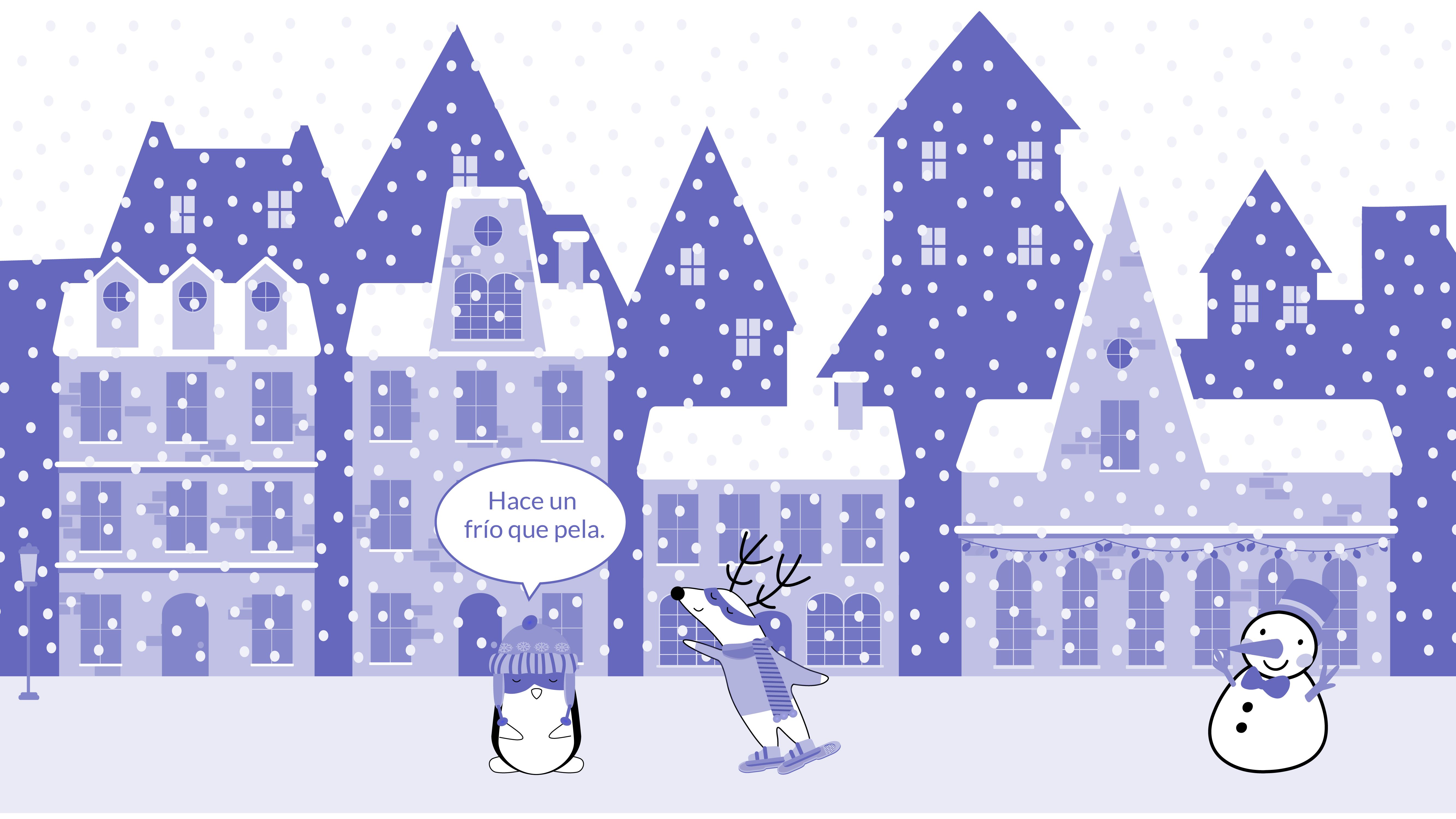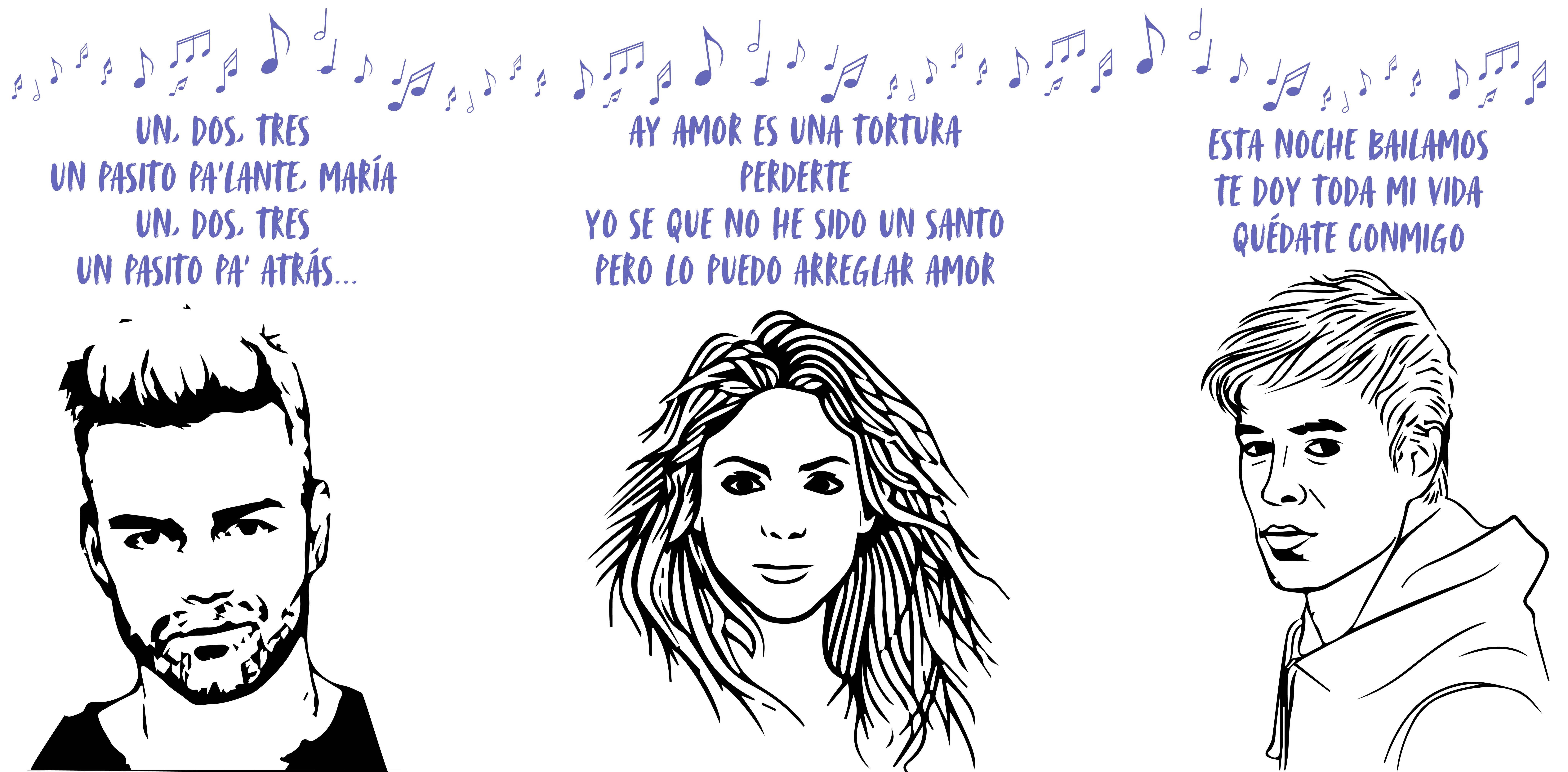
Although casual conversation is an important habit among Spanish speakers, few topics are more fitting for daily discussion than the weather — or el tiempo.
Understanding how to discuss common weather phenomena in Spanish can not only help you have vibrant conversations with native speakers but also enable you to master some of the more subtle conjunctions and collocations related to this topic.
Let's explore the specific ways to communicate about temperatures, climatic conditions, and other potential topics related to the weather.
Learn Spanish with Langster
Basic Vocabulary About the Weather in Spanish
Are you learning Spanish? Awesome! One of the important skills in language learning is mastering basic vocabulary. In this case, vocabulary related to weather, or el tiempo, in Spanish is crucial. The vocabulary is often simple, for example:
Spanish
English
el tiempo
weather
hace buen tiempo
good weather
Sometimes, however, you will notice that weather descriptions can be more complex. You might say:
Spanish
English
no hay ni una nube
not a cloud in the sky
hace sol
it's sunny
está lloviendo
it's raining
Remember, the more words you can learn and put into practice, the better you can communicate in Spanish.
The Difference Between el Tiempo and el Clima
In Spanish, the distinction between the following words revolves around specific versus long-term atmospheric conditions.
Spanish
English
el tiempo
weather
el clima
climate
El tiempo refers to the immediate and localized weather conditions, encompassing factors like temperature, humidity, wind speed, and precipitation at a given moment and place.
On the other hand, el clima pertains to the average weather patterns in a geographic area over an extended period, typically 30 years or more, depicting recurring climate characteristics such as seasonal variations, average monthly temperatures, and annual precipitation.
While el tiempo focuses on the current atmospheric state, el clima provides insight into the long-term climate trends of a region.
Talk About the Temperature

Now, let's delve a little deeper into weather vocabulary. Talking about the temperature, for instance, involves some key phrases like:
Spanish
English
hace calor
it’s hot
el frío
the cold
está nublado
it’s cloudy
está despejado
it’s clear
If you want to describe the weather as nice, you can say:
Spanish
English
hace buen tiempo
the weather is nice
However, if it’s not so good, say:
Spanish
English
hace mal tiempo
the weather is bad
Forecasts and Future Conditions
Apart from describing the present weather, you might want to discuss forecasts and future conditions. For this, you can use phrases like:
Spanish
English
va a llover
it’s going to rain
va a hacer sol
it’s going to be sunny
To talk about a change in weather, use this:
Spanish
English
El tiempo está cambiando.
The weather is changing.
By this point, you should have a solid basis for discussing el tiempo. Remember, practice makes perfect, so use these phrases as much as you can in your conversations.
Other Examples

Here are other useful examples related to the weather:
Spanish
English
Hace frío.
It's cold.
Está soleado.
It's sunny.
No hay ni una nube.
There are no clouds.
¿Cómo está el tiempo hoy?
How is the weather today?
Hace mucho calor, ¿no crees?
It's very hot, don't you think?
Va a llover más tarde.
It's going to rain later.
El tiempo está cambiando bastante rápido hoy.
The weather is changing pretty fast.
¿Cuál es tu clima favorito?
What's your favorite weather?
La tormenta de viento es fuerte hoy.
The wind storm is strong today.
Hay tormenta en el pronóstico para esta tarde.
There's a storm in the forecast for this afternoon.
Hace mucho frío esta noche, necesitarás un abrigo.
It's very cold tonight, you'll need a coat.
As you continue to practice and add more vocabulary related to the weather, you'll become even more fluent and confident in your Spanish conversational skills. Additionally, keep in mind that the weather can also be a great topic for small talk or icebreakers when meeting new people.
Weather Idioms and Expressions

As you continue to practice and add more vocabulary related to the weather, you'll become even more fluent and confident in your Spanish conversational skills. Additionally, keep in mind that the weather can also be a great topic for small talk or icebreakers when meeting
The Spanish language, like many others, also possesses a rich repository of idiomatic expressions and phrases related to weather. These modismos, or idioms, can add a splash of color to your conversations.
For instance, the phrase Estar en las nubes literally translates to “to be in the clouds,” but is used to describe someone who is daydreaming or not paying attention.
| Spanish Idiom | Translation | Explanation |
|---|---|---|
| No tener ni una nube. | Not to have a single cloud | It is used to denote someone who doesn't have any problems. |
| Llover a cántaros. | Rain in pitchers | It is the equivalent of the English phrase “raining cats and dogs.” |
| Hace un frío que pela. | It's a cold that peels | It is used to express that it's extremely cold. |
| Spanish Idiom | Translation | Explanation |
|---|---|---|
| No tener ni una nube. | Not to have a single cloud | It is used to denote someone who doesn't have any problems. |
| Llover a cántaros. | Rain in pitchers | It is the equivalent of the English phrase “raining cats and dogs.” |
| Hace un frío que pela. | It's a cold that peels | It is used to express that it's extremely cold. |
Learning and using these idioms not only enriches your vocabulary but also brings you a step closer to sounding like a native Spanish speaker. Remember, language is not just about grammar and vocabulary; it's about understanding and embracing its cultural nuances as well.
Asking About the Weather in Spanish
Inquiring about the weather is a common approach to initiate or maintain a conversation in Spanish, just as it is in many other languages. To ask about the weather, you can use a variety of phrases, depending on the specificity of the information you're seeking.
For simple, general inquiries, use these Spanish weather phrases:
Spanish
English
¿Cómo está el clima hoy?
How's the weather?
¿Qué tiempo hace hoy?
What's the weather like?
¿Cómo está por fuera?
What's it like outside?
¿Cómo es el clima en tu ciudad?
What's the weather like in your city?
If you are interested in the direction or strength of the wind, you can ask:
Spanish
English
¿Hay mucho viento hoy?
Is it very windy today?
¿Qué tiempo hace?
How's the weather?
If you want to know whether it's a good day for an outdoor activity, you can ask:
Spanish
English
¿Hace buen tiempo para la playa?
Is it good beach weather?
For more specific inquiries or to ask about future weather conditions, you can use phrases like:
Spanish
English
¿Va a llover mañana?
Is it going to rain tomorrow?
¿Qué pronostican para el clima en los próximos días?
What is the weather forecast for the next few days?
If you're asking someone directly about the weather in their area, you can use this Spanish weather vocabulary:
Spanish
English
¿Cómo es el clima en tu ciudad?
What's the weather like in your city?
¿Hace frío en tu ciudad?
Is it cold in your city?
Remember, how you ask about the weather can change the direction of your conversation, so think about the context and your aim during the conversation. Practice using these phrases to become comfortable with discussing and asking about el tiempo in Spanish.
The Bottom Line

In conclusion, being able to discuss the weather, or el tiempo, is an essential skill when learning Spanish. From simple descriptions to more complex phrases and even idioms, integrating these elements into your conversations will not only improve your fluency but also allow you to connect more authentically with native speakers.
Remember, practice is key to mastering this and any other topic in Spanish. To help you further refine your Spanish language skills, consider downloading our app, Langster.
Loaded with engaging practice exercises, real-world scenarios, and extensive vocabulary lists, Langster will take your Spanish to the next level. Start your language learning journey with Langster today!
Learn Spanish with Langster









